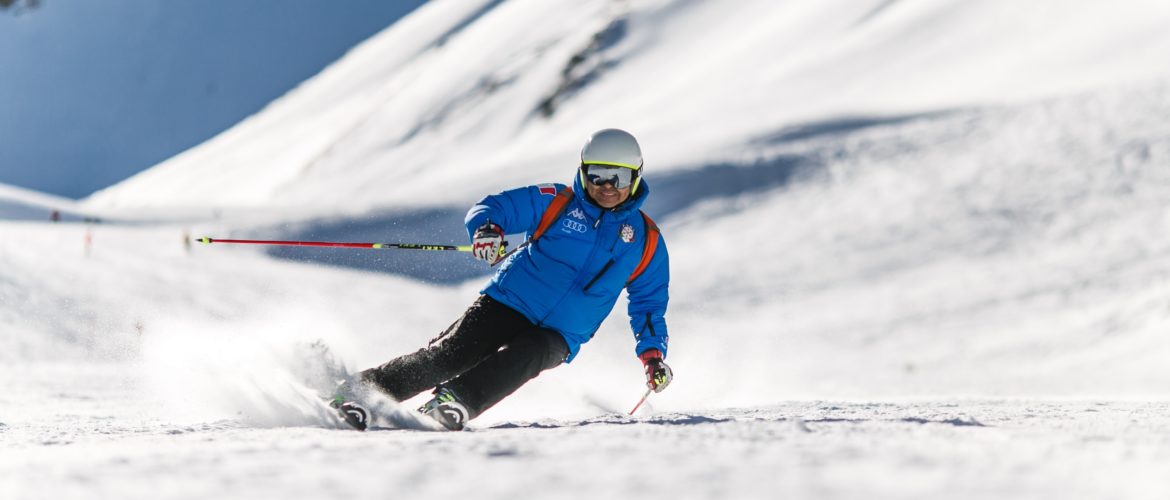Blog
Winter Sports Safety
- March 6, 2019
- Posted by: Rachel Quattrin
- Category: Prevention Teen Tween Young Adult

You step outside to see the sun shining but feel the tickle of cold air on your cheeks. At your feet, the ground is decorated with fresh snow. It is a beautiful winter day in Nevada! While some may be tempted to stay inside during these brisk months, the winter season provides the perfect opportunity to exercise outdoors. Winter sports can be great for physical health, but it is also important to participate safely.
Participating in winter sports can help you to reach your exercise goals. For most people, snowboarding and skiing come to mind right away. But activities such as sledding, snow shoeing, cross country skiing, and ice skating are also forms of aerobic exercise. Aerobic exercise means that your heart rate is raised for an extended amount of time. You should aim to participate in aerobic activity at least three times per week. Benefits of regular exercise include healthy weight management, reduced stress, improved sleep, and strengthening of bones, muscles, and joints.
While participating in winter spots, it is important to have safety at the front of your mind. According to the US Consumer Product Safety Commission, over 220,000 people were treated for winter sports-related injuries in 2017. Many of these injuries were sprains, strains, dislocations, and fractures. While this can be intimidating, following certain precautions can reduce your risk of getting hurt while having fun in the snow. The following are some safety tips to follow when participating in winter sports:

- Check the weather before you go. Be aware if there are any expected storms or temperature drops. It is important to take shelter in cases of worsening or extreme weather.
- Warm up your muscles before exercising. Cold and tight muscles are at a higher risk for injury. Try stretching in a warm place and start with a low intensity exercise before doing something more strenuous.
- Make sure that all of your equipment fits properly. It should also be in good condition and work as intended.
- Wear safety gear as appropriate. If you are new to ice skating, a helmet and knee/elbow pads can help to reduce injury. For snowboarding and downhill skiing, you should always wear a helmet. Bicycle helmets aren’t going to be as effective as helmets designed for these winter sports. Helmets help to significantly prevent severe head injuries in case of falls or collisions.
- Understand your skill level. When snowboarding and downhill skiing, it is important to be aware of your strengths and limitations. Going on runs that are above your skill level can increase the chance that you lose control or exceed a comfortable speed, which may lead to falls or collisions.
- Take a lesson from a knowledgeable instructor. Especially if you are new to a sport, it is important to learn proper form and techniques. For example, in sports where there’s risk of falling, it is beneficial to know the proper way to fall. Additionally, these lessons may teach you rules of the sport which can improve your interactions with fellow participants.
- Wear appropriate clothing. This is especially important in freezing temperatures. It is recommended that you wear multiple layers of light and loose clothes. The outer layer should especially be water and wind resistant. This helps to accommodate the body’s changing temperatures and to combat frostbite.
- Don’t forget to stay hydrated. Oftentimes people are less likely to feel thirsty when they feel cold. But your body is still working hard! It is important to drink enough water before, during, and after physical activity.
- Remember to wear sunscreen… even in the winter! Skin-damaging sun rays can reflect off of snow, increasing the risk of sunburn. It is important to protect any exposed skin for both short term and long term health.Winter sports can be a wonderful way to enjoy the outdoors during the winter months. They are also a great way to exercise and improve physical health. As with summer sports, winter activities come with inherent risks, but these risks can be lowered if you follow safety precautions. Only when you are safe and protected can you fully enjoy the fun in the sun (and snow!)
Sources:
For information on exercise – http://healthyyoungnv.org/teen-category/exercise/
For information on winter sports safety- https://healthier.stanfordchildrens.org/en/winter-sports-safety-injury-prevention-tips/
& https://orthoinfo.aaos.org/en/staying-healthy/winter-sports-injury-prevention/This blog was written for Healthy Young NV by Meg, a member of the Youth Advisory Council.

